Château Troplong Mondot ‒ Discovering the Unique Terroir of Saint-Émilion
- Song Wei

- Jul 30, 2024
- 11 min read
A bright, sunny morning set the perfect tone for my journey from Bordeaux Saint-Jean train station to the enchanting vineyards of Saint-Émilion. The 31-minute train ride whisked me away from the bustling city through picturesque countryside landscapes. As the train glided smoothly along the tracks, I crossed both the Garonne and Dordogne rivers, their serene waters sparkling in the sunlight. The journey to Saint-Émilion, which is located at the right bank of the Dordogne river, offered stunning views of vibrant green vineyards and quaint French villages. Each scene is a testament to the region's storied wine heritage. With each passing mile, the anticipation of visiting Château Troplong Mondot grew, making the short but scenic journey an unforgettable prelude to an exquisite wine-tasting experience.

Château Troplong Mondot holds a distinguished position as a Premier Grand Cru Classé B in the latest 2022 Saint-Émilion classification system. This prestigious designation highlights the estate's exceptional quality and commitment to excellence in winemaking. With its terroir-driven approach and innovative techniques that focus on precision, Château Troplong Mondot stands out among the elite producers in the Saint-Émilion appellation. Renowned for its opulent and complex wines, the château continues to be a beacon of excellence in the world of Bordeaux wines.
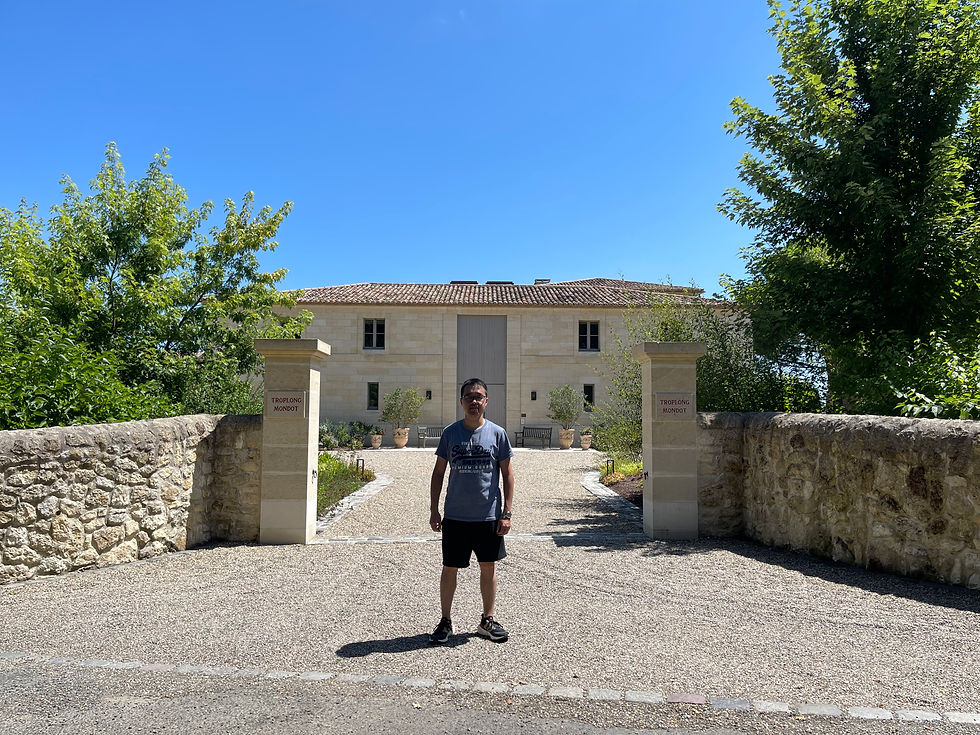
Originally created in the 18th century, the estate was owned by Abbe Raymond de Sèze. The property was then purchased by Raymond Troplong, who gave the estate its namesake and increased the size of the vineyard holdings to what they are today. Mondot is the name of the hill where the estate is located at. Château Troplong Mondot was eventually acquired by the legendary Thienpont family, who oversaw operations at the estate for a long time. However, it was not until the estate was purchased by Christine Valette that Château Troplong Mondot really began its meteoric rise in quality. Christine Valette was a wonderful, kind, smart and savvy woman who started managing the property in 1980. She made a series of sweeping changes to the estate, such as switching everything over to manual harvesting, lowering yields, and removing the copious amounts of Malbec vines that were planted over the grounds. Christine also changed the cellars at Château Troplong Mondot, like adding temperature controlled, stainless-steel tanks in the vat room. It was only a mere matter of time before critics started to take notice of the increased quality of the grand vin coming from this estate. The vintages released during Christine’s tenure at the estate were considered some of the most profound of all time. Tragically, Christine passed away but her legacy at the estate lives on.
Today, Château Troplong Mondot is owned by the French insurance company SCOR and managed by its CEO, Aymeric de Gironde. It is the ideal arrangement to place vineyards under the stewardship of insurance companies. Their long-term investment strategies align with the extended time horizon required for vineyard development and wine production. Their focus on stability and sustainable growth makes them ideal for managing and nurturing vineyards, ensuring consistent quality and profitability over many years. At present, Château Troplong Mondot is living a momentous moment in its history. The spirit of renewal and of excellence instilled by SCOR is being materialised by a large-scale project which overlooked the completion of new winemaking facilities and a renovated boutique hotel and restaurant.
Château Troplong Mondot is renowned for its unique terroir, which contributes to the distinct character of its wines. To truly understand Château Troplong Mondot, one must transcend mere categories and descriptions and instead immerse themselves in its essence. Nestled atop a serene hill, the estate overlooks the picturesque valley and village of Saint-Émilion, enveloped by undulating hills, vines, bushes, hedges, lanes and low stone walls. Château Troplong Mondot exists as its own distinct world; it is a testament to an extraordinary terroir that is unmatched. The notion of "a sense of place" at Château Troplong Mondot evokes an almost ineffable harmony and attachment ‒ a unique atmosphere and state of mind that profoundly resonates on both personal and universal levels. This spirit of place is encapsulated in the wine itself where the complex interplay of minute variations is meticulously assembled. The wine’s power and elegance reflect the terroir’s essence, offering a sense of fulfilment and a profound connection, as if one has always belonged here. Château Troplong Mondot exemplifies the balance of strength and elegance, complexity and precision, brought to life by the dedication of those who reveal the terroir’s true nature.
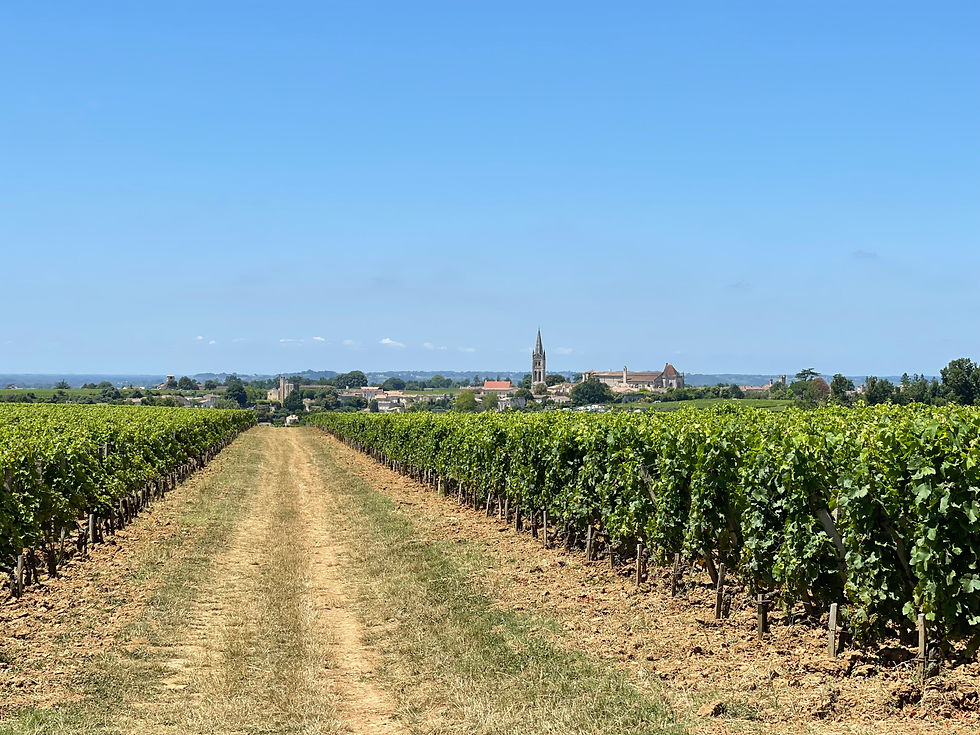

Its vineyard is situated at the highest points in Saint-Émilion with an altitude of 110 meters above sea level. This elevation provides excellent drainage and exposes the vines to favorable sunlight and airflow, which helps in the ripening process and reduces the risk of disease. Its terroir benefits from an exceptional 360° exposure where vines are being planted on plots with different aspect and exposure.
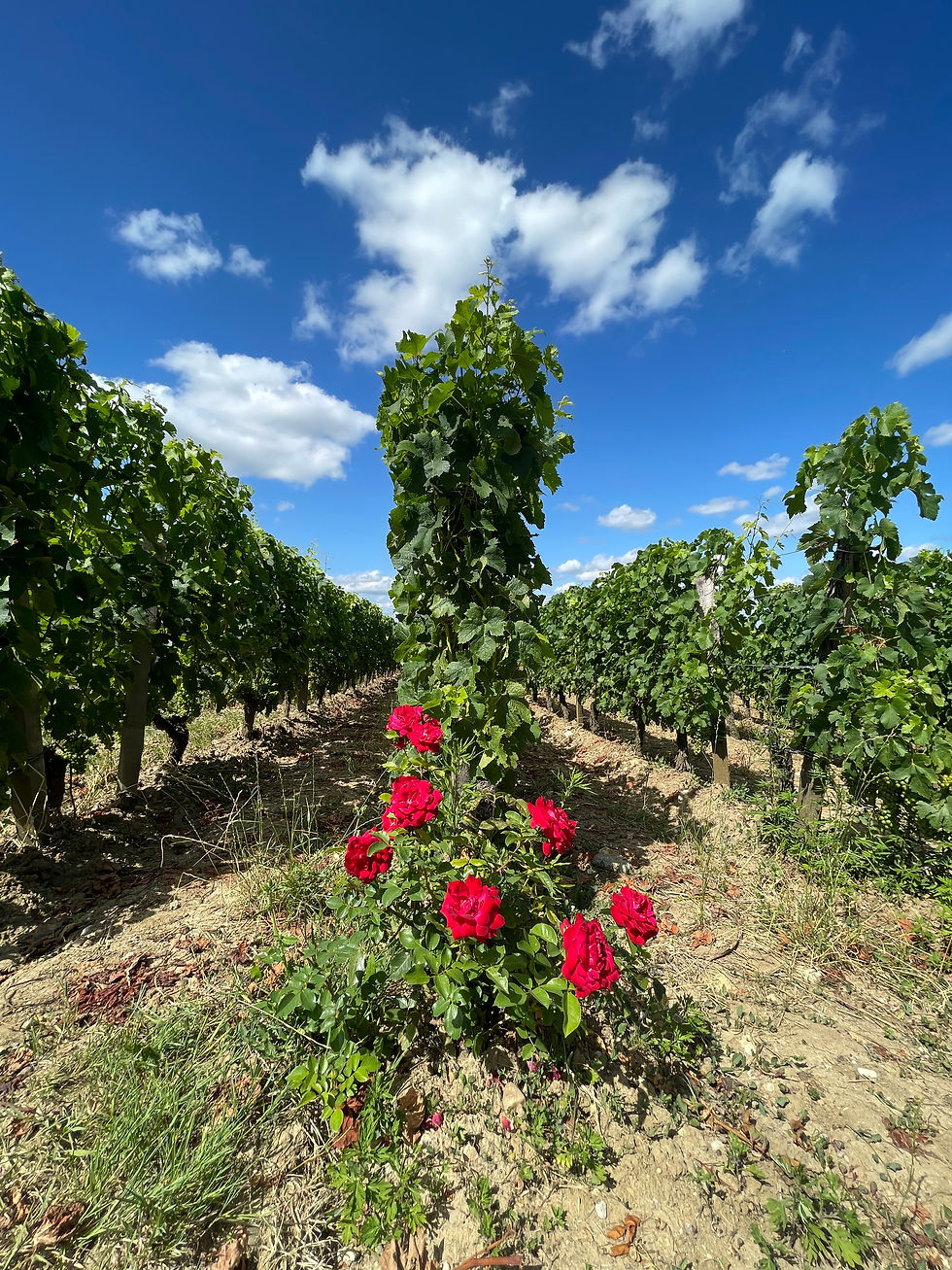
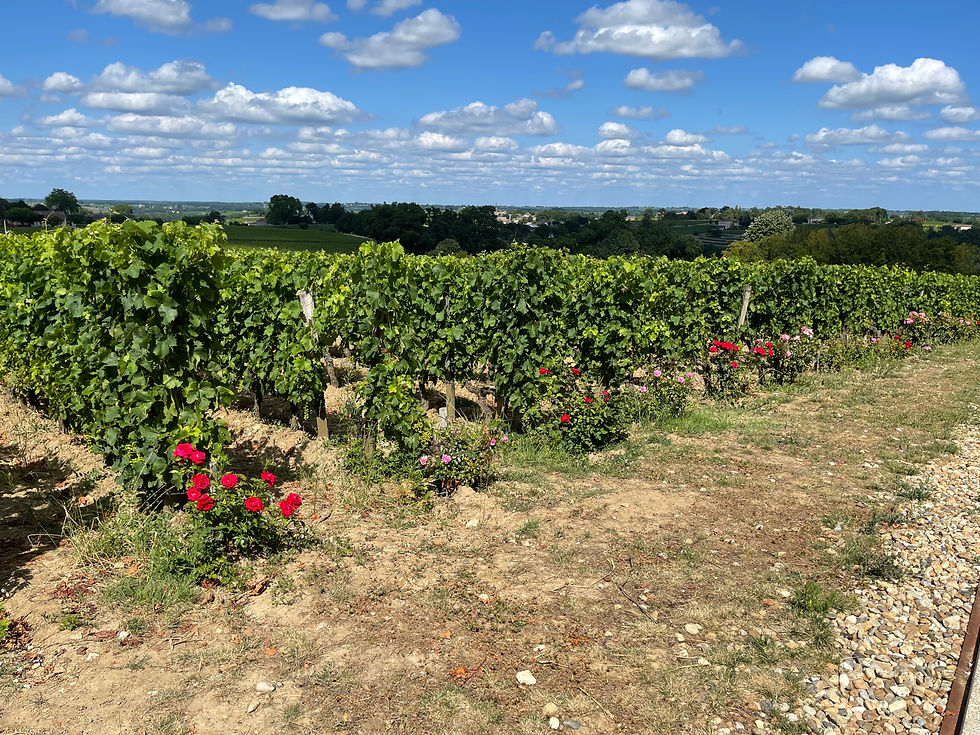
There is a complex mix of three different layers of soils at Château Troplong Mondot, namely molasses de l’Agenais (non-calcareous, clay-silt soil on hard limestone), argiles limoneuses sur calcaire (silty clay on limestone) and calcaire à Astéries (limestone). In ancient times, parts of what is now France were submerged under seawater. When the water receded, the soil left behind did not erode uniformly. This uneven erosion created a diverse array of soil layers and types across the region. This geological diversity is a key factor in the renowned complexity and variety of wines.

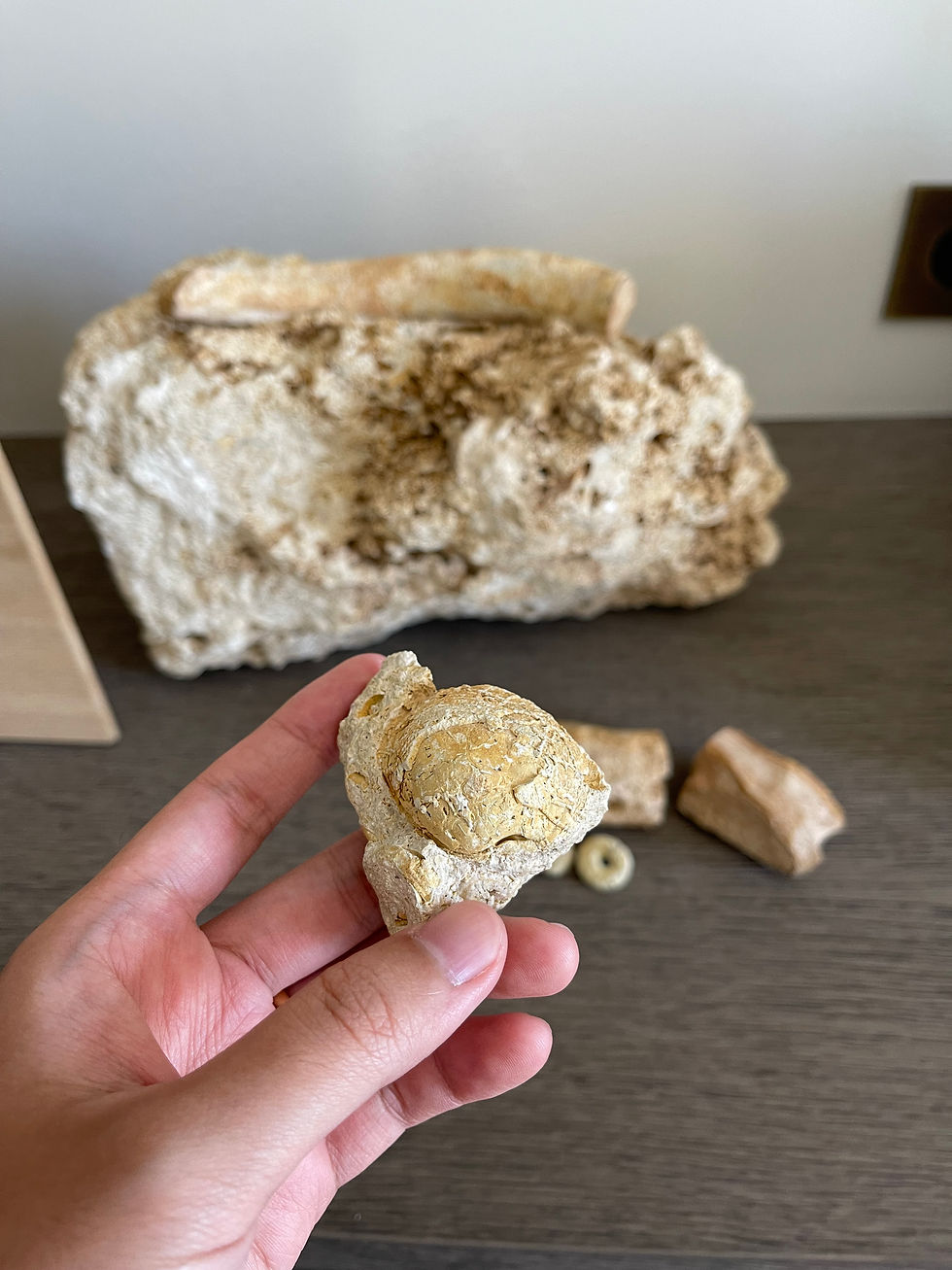
The topsoil of the vineyard is covered with flint and limestone. Flint is a yellowish-orange rock that was commonly used to create fire in ancient times due to its ability to produce sparks when struck against steel. One of the most important features of flint is that it was really hot when I held it on my hand. Its ability to absorb heat during the day, and to re-radiate it back to the vines at night allows the planting of Cabernet Sauvignon at Château Troplong Mondot. It is rather rare to find plantings of Cabernet Sauvignon in Saint-Émilion due to the appellation’s cool and humid weather. This late-ripening grape variety requires much warmth to achieve optimal ripeness, otherwise it will give herbaceous notes when underripe due to the presence of methoxypyrazines that could only degrade with heat. However, plots of Cabernet Sauvignon are successfully grown on the southerly aspect of Château Troplong Mondot’s vineyard owing to the presence of flint.

In contrast, limestone is whiter and cooler. The porous nature of limestone allows roots to penetrate deeply, accessing water reserves during dry periods. This deep rooting enhances the vine's resilience and contributes to the complexity of the grapes.
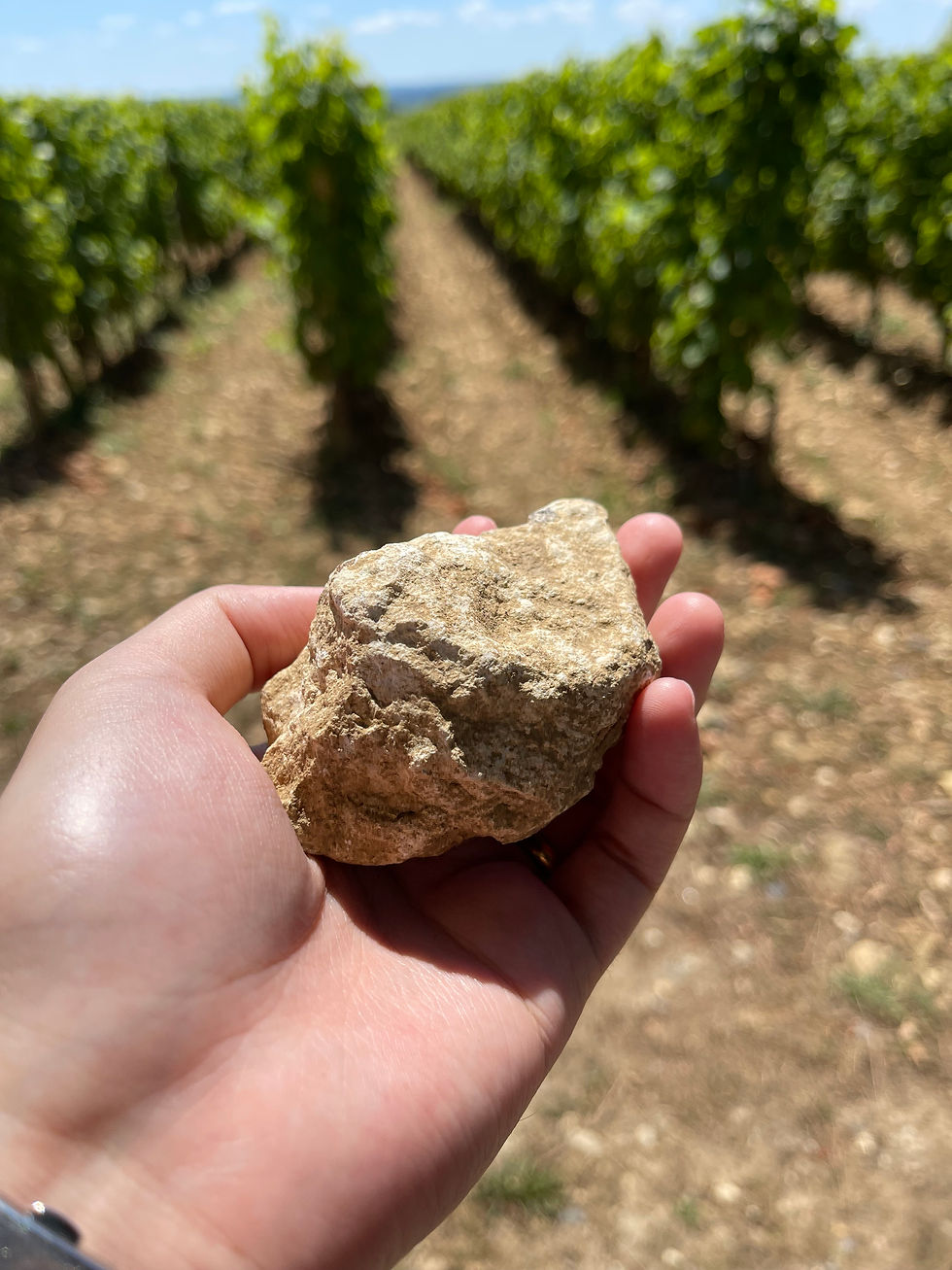
The diversity of soils available in the vineyards of Château Troplong Mondot gave different characters to their signature grape variety – Merlot. Those that are planted on flint with east exposure give more body to the wines, whereas those that are grown on limestone soils with north exposure have higher acidity and more minerality.
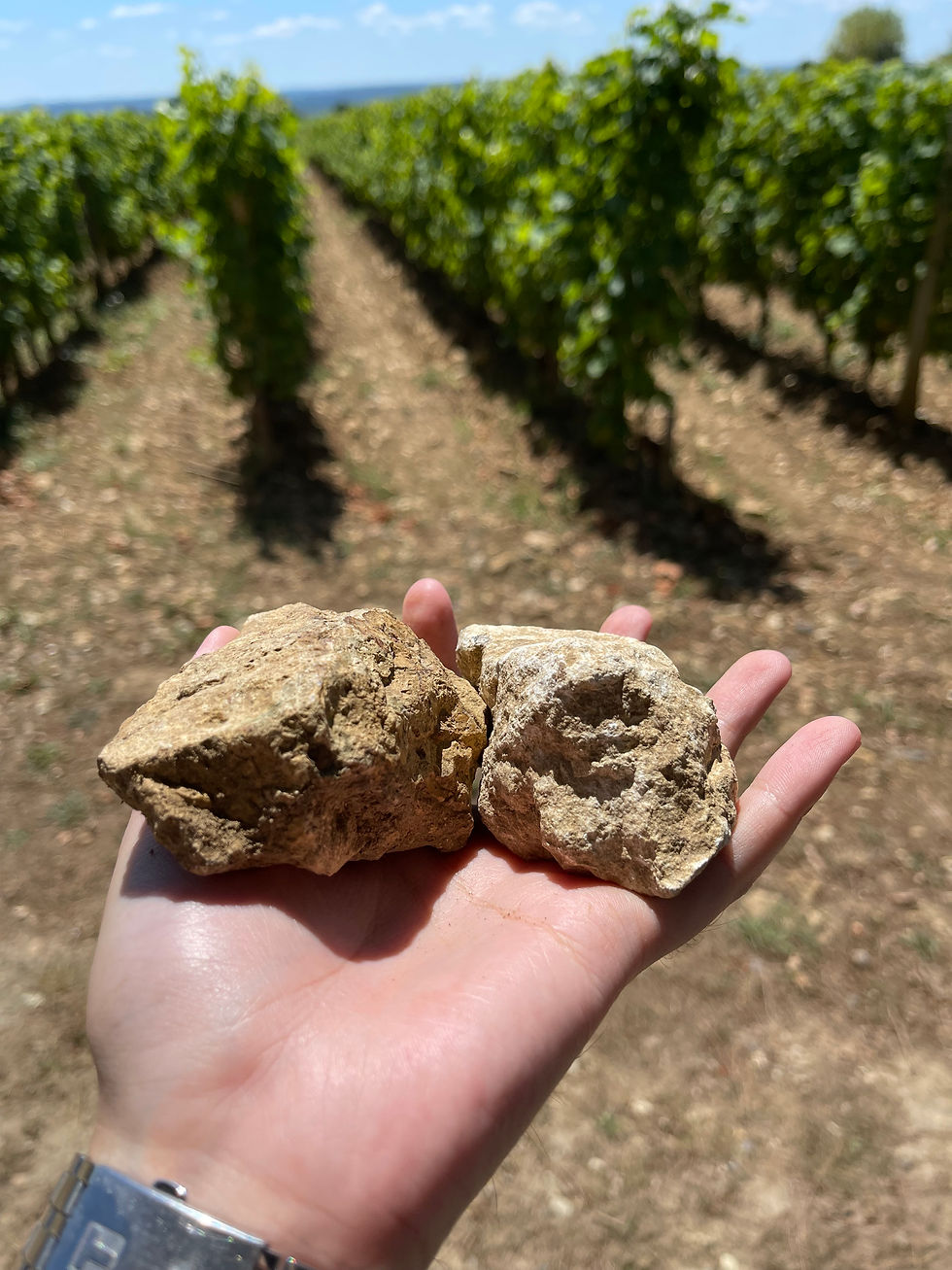
Very early on, the estate collaborated with Claude and Lydia Bourguignon. They are both former INRA researchers who carried out a particularly fine analysis of the soil diversity, allowing the creation of micro-plots that benefit from tailor-made care to bring out their quintessence. Each plot has its own vats with the aim of preserving their character before blending. This unique ensemble of terroir allows the winemakers to have many blending options in order to achieve complexity in the final blend so as to reflect the identity of the wines from the Mondot hill.

Every effort in the vineyard and cellar is focused on producing a wine that is as close as possible to its nature and origins. Horses are used to plough the vineyard from April till the end of July, and also at the end of harvest time. Although they are much slower than tractors, they are lighter and do not compact the soil as much as tractors do. As a result, the soil is more aerated to support the ground’s microbial life. Chinese radish are planted, and when they decompose, they release nutrients back into the soil and most importantly, leave behind air pockets. These air pockets help to break up compacted layers, improving soil structure and aeration, which are particularly beneficial in vineyards where soil compaction can restrict root growth. The channels left by the decomposing radish roots also enhance water infiltration, reducing runoff and promoting deeper water penetration. These are beneficial for the deep-rooting grapevines, ensuring better water availability.
Moreover, the estate has long banned the use of herbicides and insecticides both in their vineyard and in their gardens. Mustard plants are being grown to act as biofumigants in the vineyard. They contain glucosinolates, which can be toxic to soil-borne pests and pathogens. When mustard plants are mowed and incorporated into the soil, they release these compounds, reducing pest and disease pressures.
During my visit to Château Troplong Mondot, my knowledgeable guide took me on an enlightening tour of the vineyards, teaching me how to distinguish between Cabernet Sauvignon and Merlot vines. I learned that Cabernet Sauvignon vines have smaller, but thicker-skinned berries that grow in loosely packed clusters, giving wines more colour, tannin, structure and character due to their higher skin-to-pulp ratio. Additionally, the leaves of Cabernet Sauvignon vines tend to be smaller in size. By comparison, Merlot vines produce larger, thinner-skinned berries in tighter clusters. Their bunches usually have a characteristic winged structure with one longer cluster in the middle and two shorter clusters by its sides. Their leaves are much larger compared to those of Cabernet Sauvignon. This hands-on lesson not only enhanced my appreciation for the craft of winemaking, but also deepened my understanding of the unique characteristics of these two grape varieties.
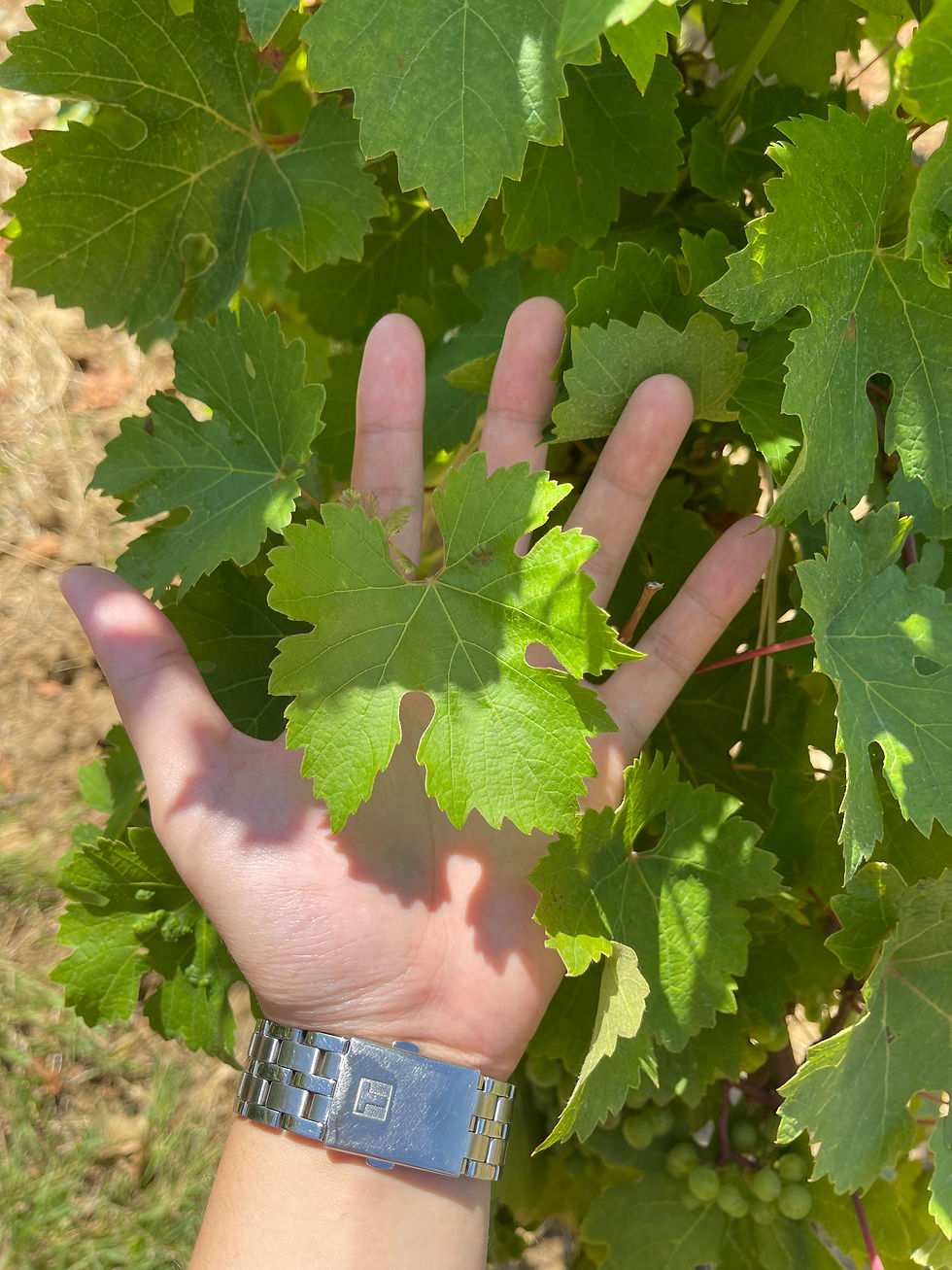



The family plot near the reception office is a true testament to the estate’s collective passion for viticulture. Here, everyone from the chef and reception team to the hospitality staff rolls up their sleeves to plant and tend the vines. This hands-on experience ensures that each member of the estate gains a deep, personal understanding of viticulture, fostering a shared appreciation for the art and science behind their wines. It is a tradition that unites them in their commitment to excellence and craftsmanship.
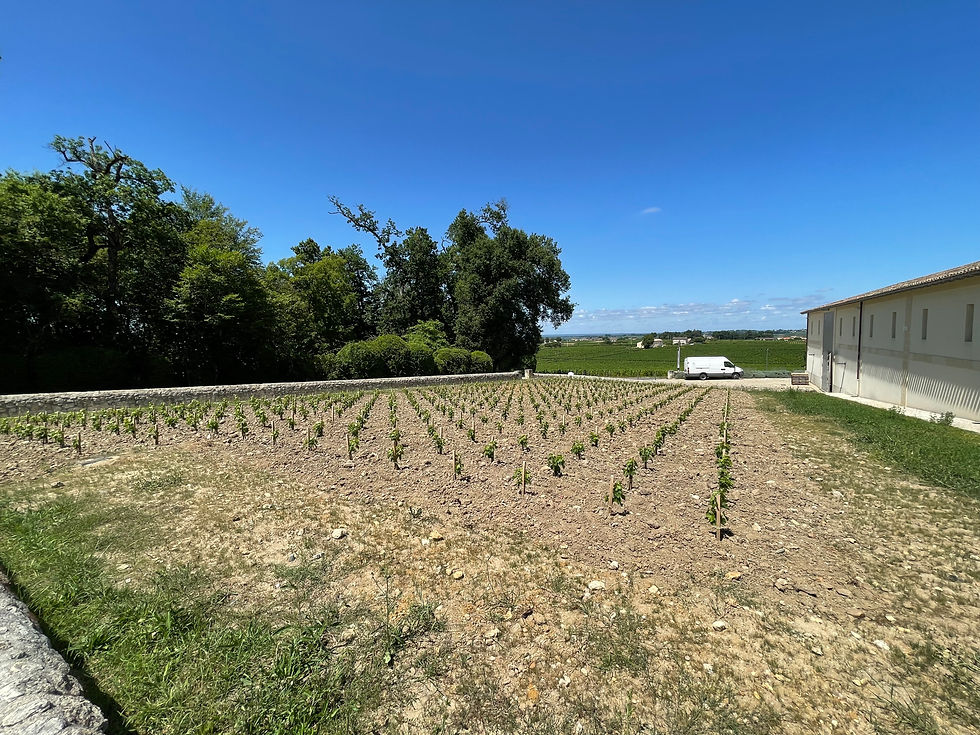
I had the chance to visit their grape sorting room. They have three levels of sorting. The first level of sorting happens right in the vineyard during the hand-harvesting stage, ensuring only the finest grapes are selected from the very beginning. The second level occurs at a sorting table where skilled workers carefully sort the grapes by hand, followed by a passage through a destemmer to remove stems. The third and final level is an advanced optical sorting process that uses cutting-edge technology to guarantee that only the highest quality berries make it to production. This thorough and precise sorting process, which spans a harvest period of 5-7 weeks, is a testament to Château Troplong Mondot’s commitment to excellence in winemaking.
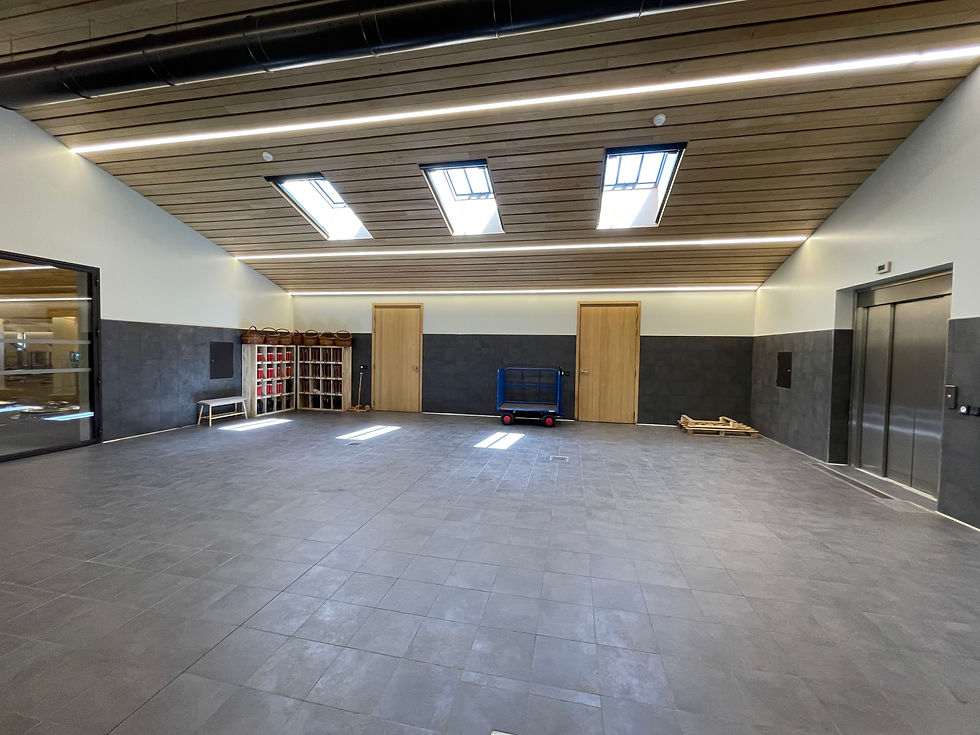
During my visit to the vat room at Château Troplong Mondot, I was intrigued by their unique approach to fermentation. The estate houses 42 stainless steel vats; each vat is potentially designated for specific vineyard plots ‒ one for the top plot, another for the middle, and yet another for the end of the plot. This high-precision method underscores their commitment to creating wines that authentically represent their diverse terroir. Château Troplong Mondot opts for fermentation in stainless steel vats ‒ a distinctive choice in red wine production where oak barrels are typically preferred. Their aim is to preserve the purity of their fruit, resulting in wines that are more delicate and nuanced. This method reflects their dedication to showcasing the natural characteristics of the grapes without introducing additional tannins and flavours from the oak. The result is a wine that truly embodies the essence of the vineyard, offering a pure and refined tasting experience.

The ageing room is being maintained at a constant temperature of 12°C. I was struck by the diversity of ageing vessels used to enhance their wines' complexity. The estate employs four different types of vessels: new French oak barrels, used oak barrels, clay amphorae and foudres. New French oak barrels impart rich, toasty notes and robust structure, while used oak barrels contribute subtlety and integrate flavours more gently. Clay amphorae allows a unique micro-oxygenation and purity of fruit. Foudres are large wooden casks that provide a nuanced, less intrusive oak influence while allowing greater maturation. This varied approach to ageing not only offers a broad spectrum of flavours and textures, but also provides the winemakers with an array of blending options to craft wines of exceptional depth and character.
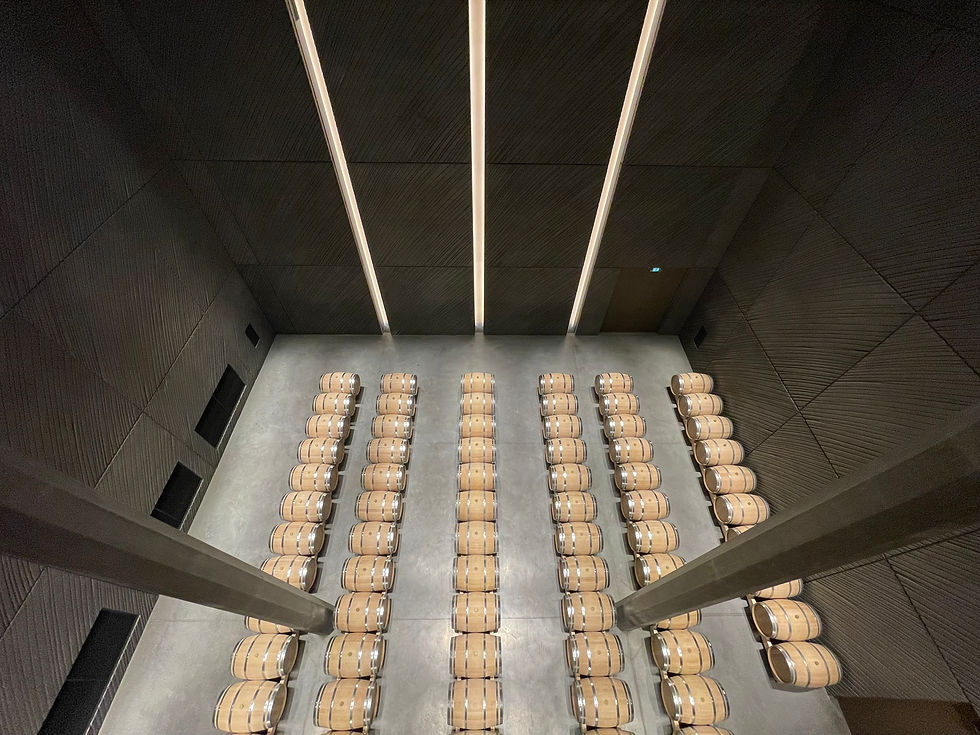

The estate is home to 39 hectares of vines at the time of writing, for which 28 hectares were historical and an additional 11 hectares were bought in 2017. It also has a selection of fabulous bedrooms and a Michelin-starred restaurant, Les Belles Perdrix, headed by David Charrier ‒ one of today’s most upcoming chefs. Guests are invited over a stay, a meal, or a visit to immerse themselves into an art of living; an ideal haven for those who are on the lookout for more a simple vineyard. The flowers adorning the bedrooms are all sourced from their own lovingly planted garden. Each bloom is a testament to the care and dedication invested in cultivating a variety of vibrant and fragrant flowers. This personal touch not only enhances the room's aesthetic appeal, but also brings a bit of the garden's natural beauty indoors, creating a warm and welcoming atmosphere for guests. A lovely terrace are accessible from all of the bedrooms to allow guests to get together at any time of the day to read, play board games, have a chat, or just enjoy priceless moments.
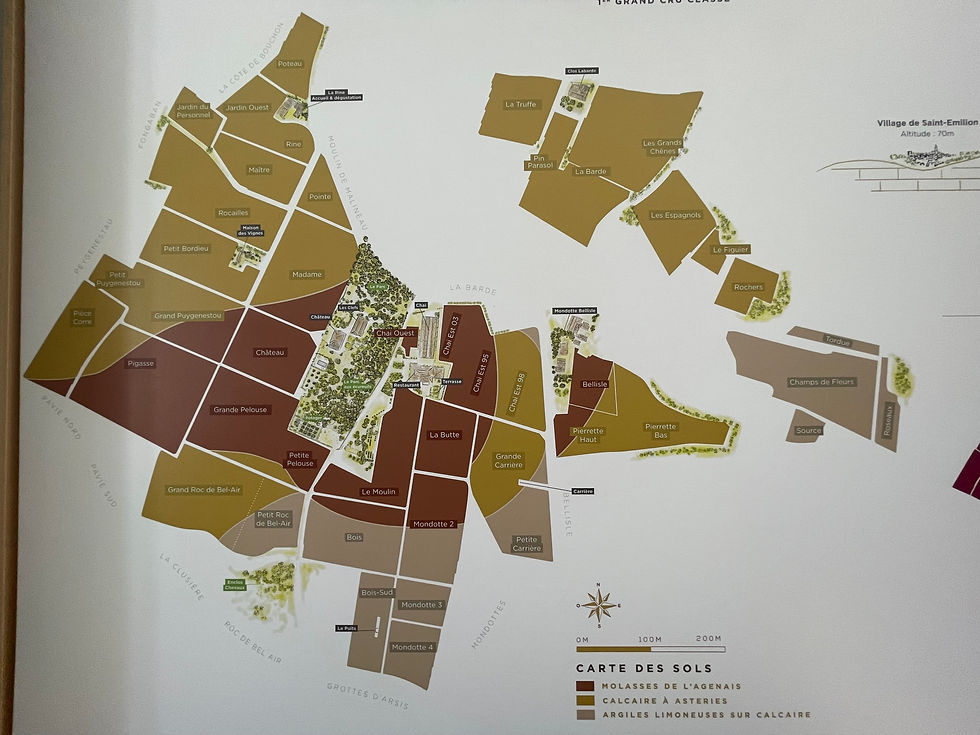

The chateau of Troplong Mondot, built in 1745, has also open its doors to those who are keen to privatise the property. It offers a unique experience for guests to live the life of the owners. With imposing fireplaces, soft sofas, custom-made furniture and antique objects, this 500 m2 property radiates an elegant feeling of coziness. Guests can either opt for a stroll through the vines, a nap by the vast and sumptuous pool surrounded with Brazilian stones, or enjoy a glass of wine in front of the sunset, depending on what they feel like. During their stay, guests can also hop on one of the many electric bicycles available on the estate and go on an adventure in the Saint-Émilion region.
As evening beckons, guests can choose to admire the amazing view from their private terrace, or dine at Les Belles Perdrix. Rigorous and passionate, Michelin-starred chef David Charrier creates gastronomic meals that bring wines of Château Troplong Mondot and its terroir into the spotlight. He gets his inspiration from memories and encounters and carefully selects local produce from his most trusted suppliers. Every dish is the result of his natural intuition, constantly challenged so as to obtain the perfect match and to provide wonderful sensations. The chef and his team also tend their very own garden where they grow and pick their own herbs, vegetables and fruits. Ducks are raised and allowed into the garden; they help to eat the insects and remove any unwanted pests. Chickens and pigs are also reared to consume the organic wastes produced by the team.



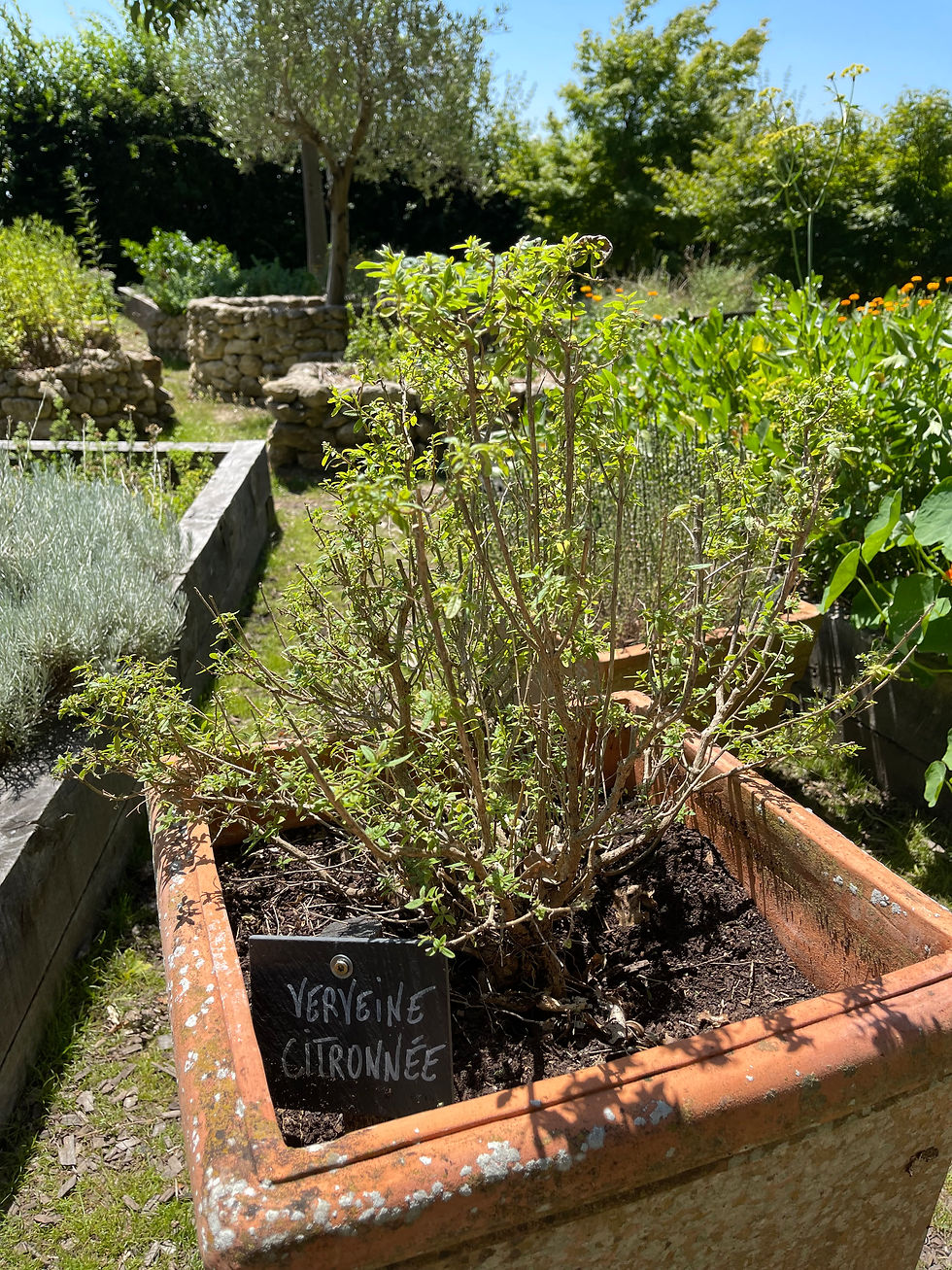

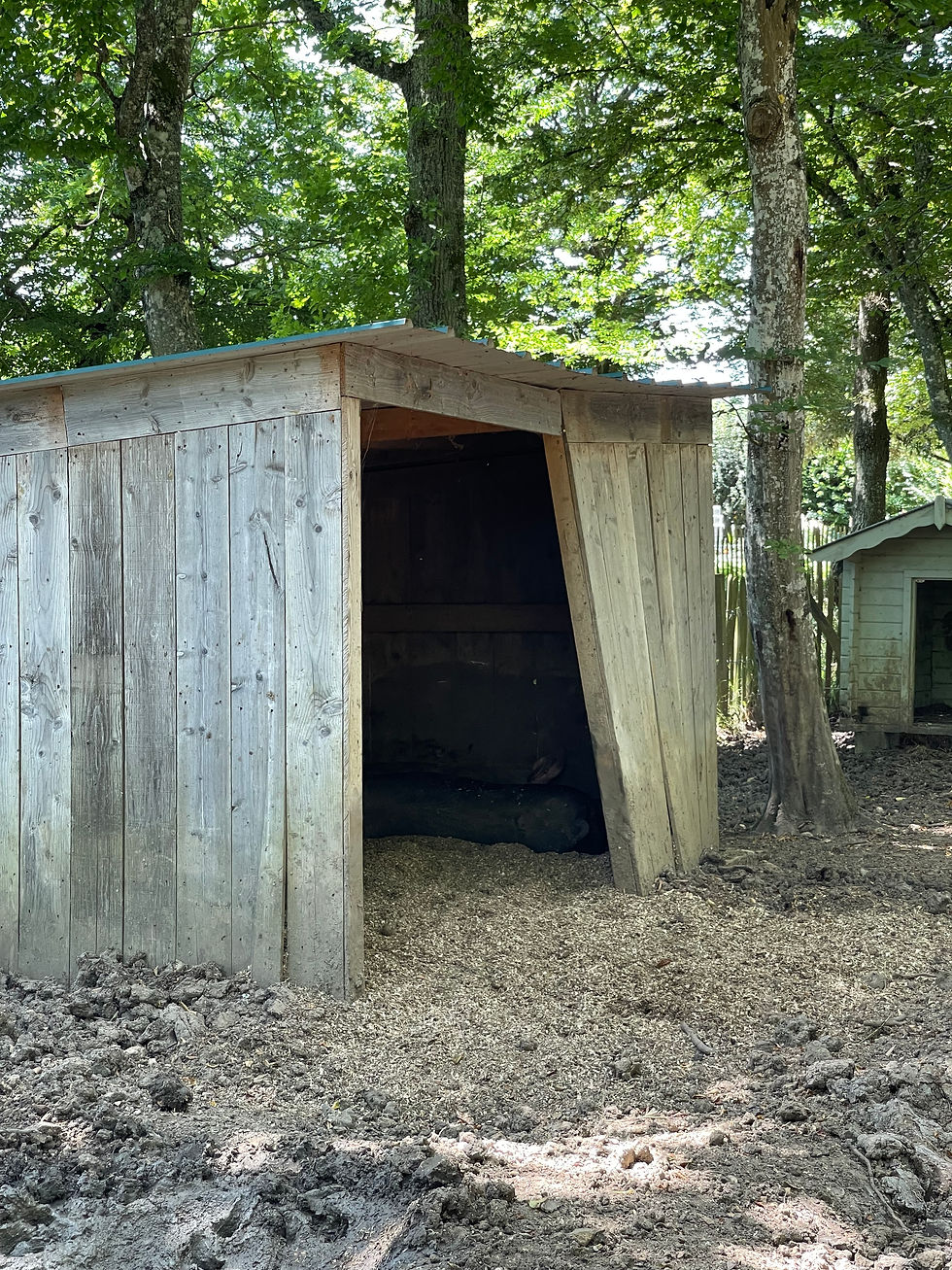
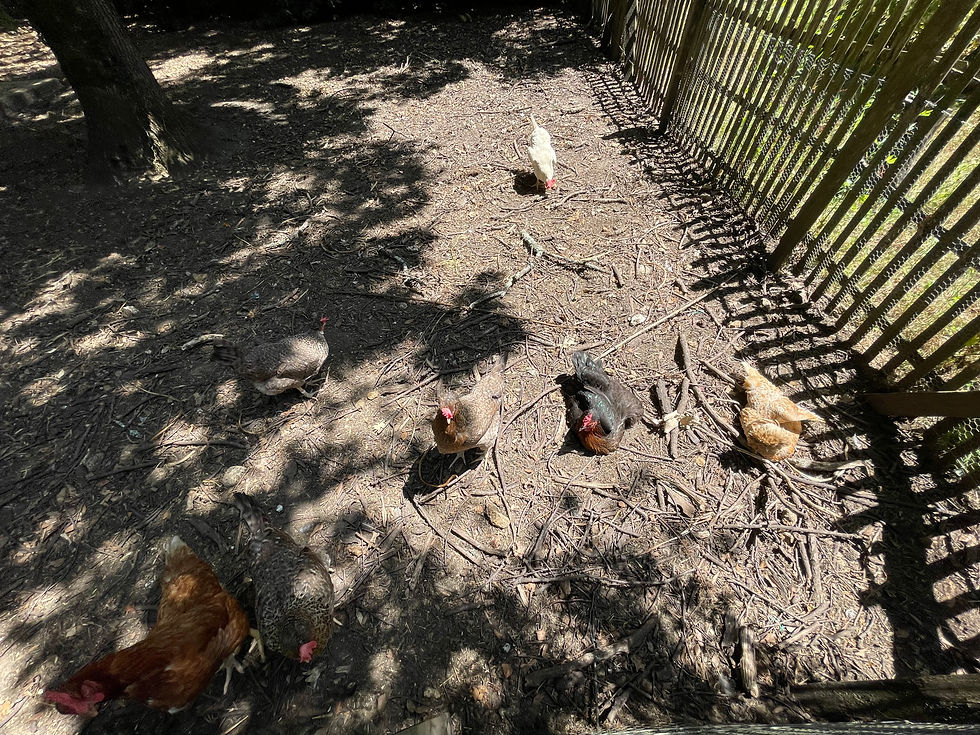
The guided tour at Château Troplong Mondot concluded with the most eagerly awaited segment ‒ the tasting session. This highlight allowed me to sample three exceptional vintages. First, the Mondot 2020 vintage. It is the second label of Château Troplong Mondot. It is made up of 100% Merlot, offering a delightful nose with medium intensity of red plum and cherry, accompanied by high acidity and a pronounced minerality from its limestone-planted plot dedicated to producing only Mondot wines. The tannins were surprisingly silky, enhancing its smooth texture. Next, I tasted the grand vin Troplong Mondot 2019 vintage. It is a blend of 85% Merlot, 13% Cabernet Sauvignon and 2% Cabernet Franc. This vintage showcased a beautifully balanced interplay of fruit and oak aromas, with lower acidity than the Mondot but a slightly higher tannin level, making it exceptionally suitable for ageing. Its smoothness was remarkable, with no noticeable alcohol burn and a complex, well-integrated profile. Lastly, I was treated to the Troplong Mondot 2020 vintage, which displayed an even more pronounced bouquet and fruitiness while maintaining a perfect balance with oak flavours. This vintage stood out as exceptional, surpassing the 2019 vintage in terms of depth and finesse.
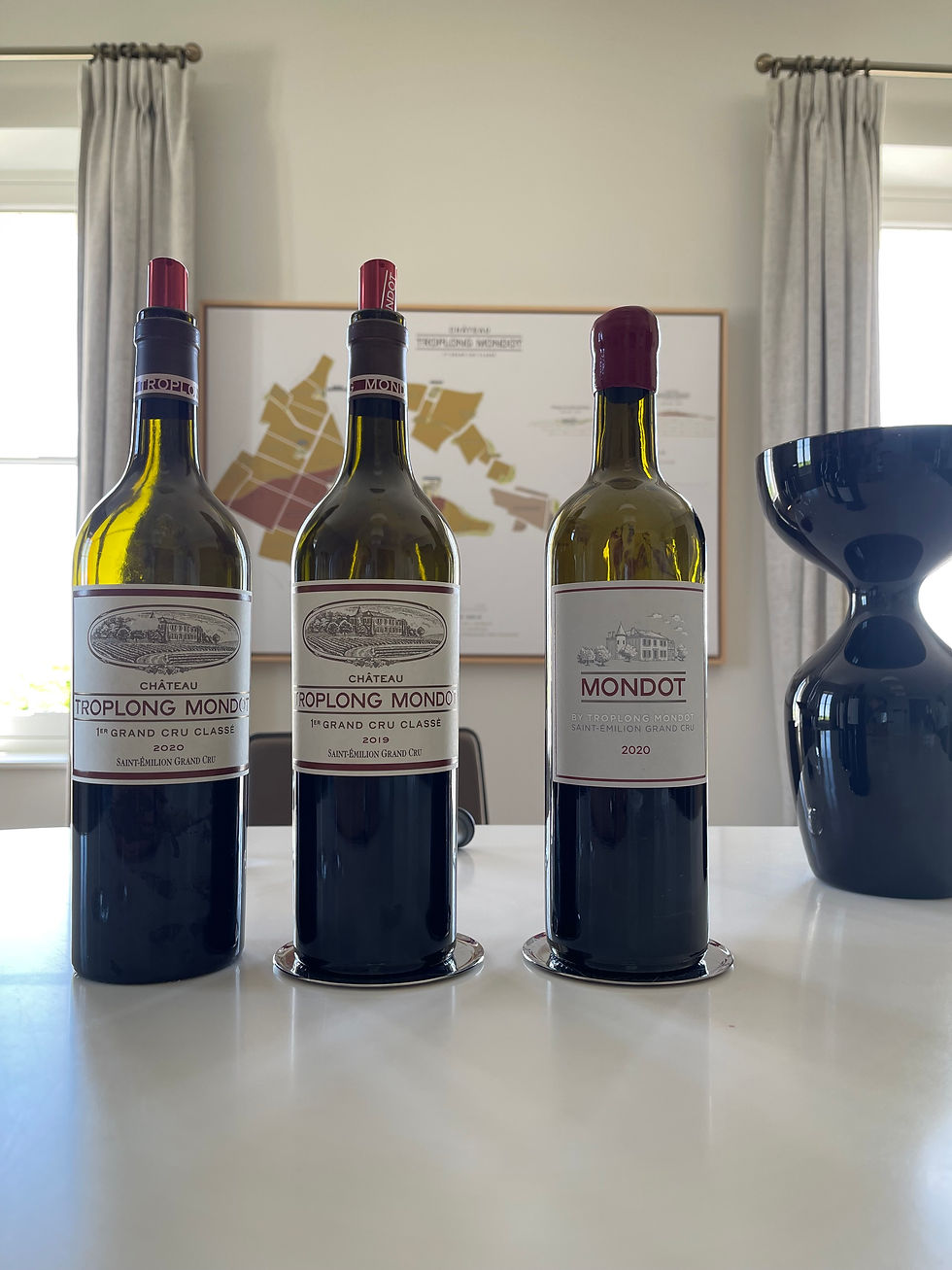
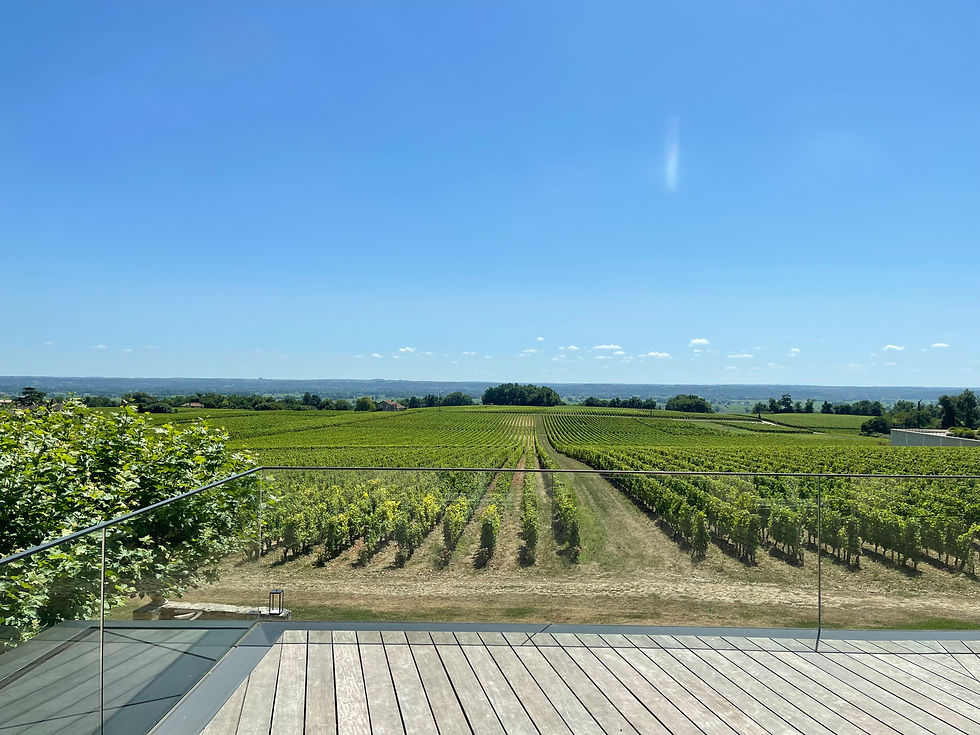
As my visit to Château Troplong Mondot drew to a close, I left with a bottle of the Troplong Mondot 2020 vintage ‒ a year that holds significant personal meaning for me. The experience was made even more memorable when I had the opportunity to have the bottle and its wooden case signed by Aymeric de Gironde ‒ the CEO of SCOR and the château’s owner. Despite his busy schedule, he graciously took the time to add his signature, making it feel like receiving a coveted celebrity autograph. This thoughtful gesture added a personal touch to an already unforgettable day, and I deeply appreciate his kindness. The visit not only enriched my appreciation for the artistry of Château Troplong Mondot, but also left me with a cherished memento that will always remind me of this special experience.

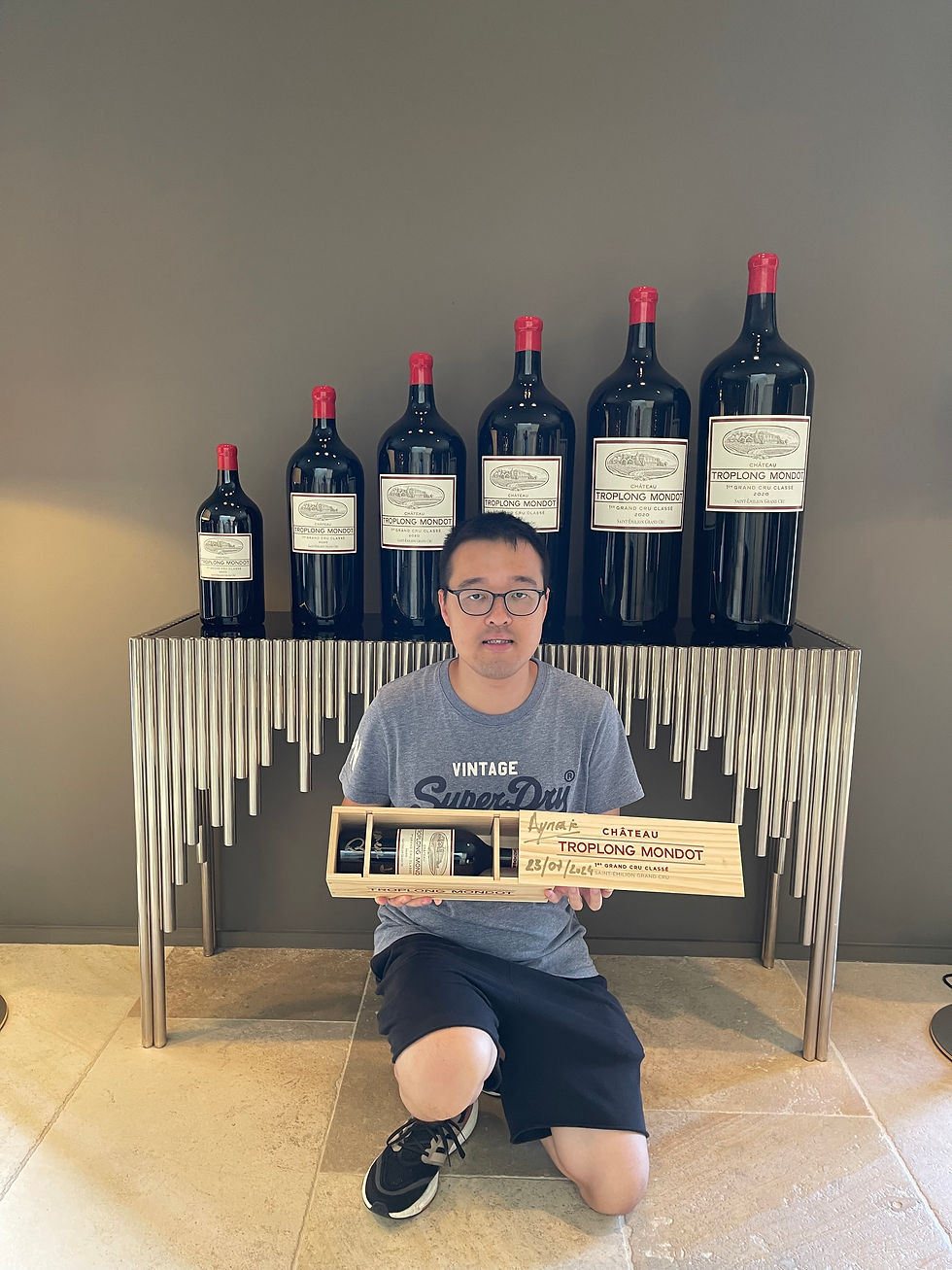








Comments